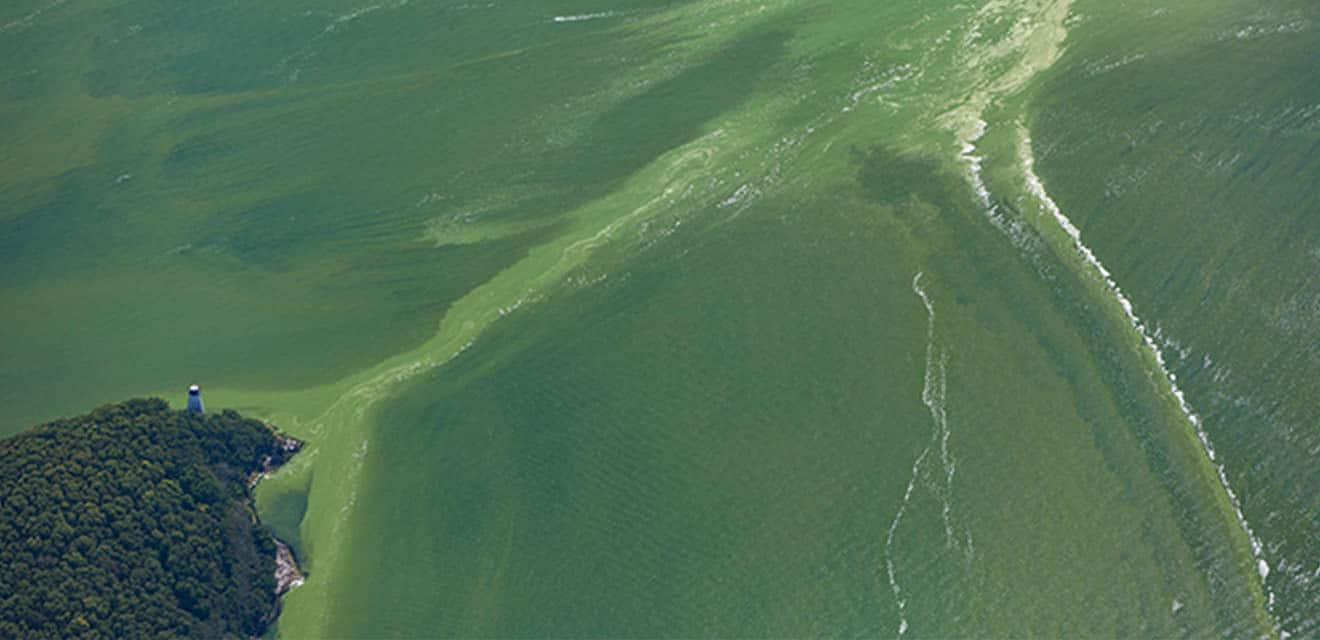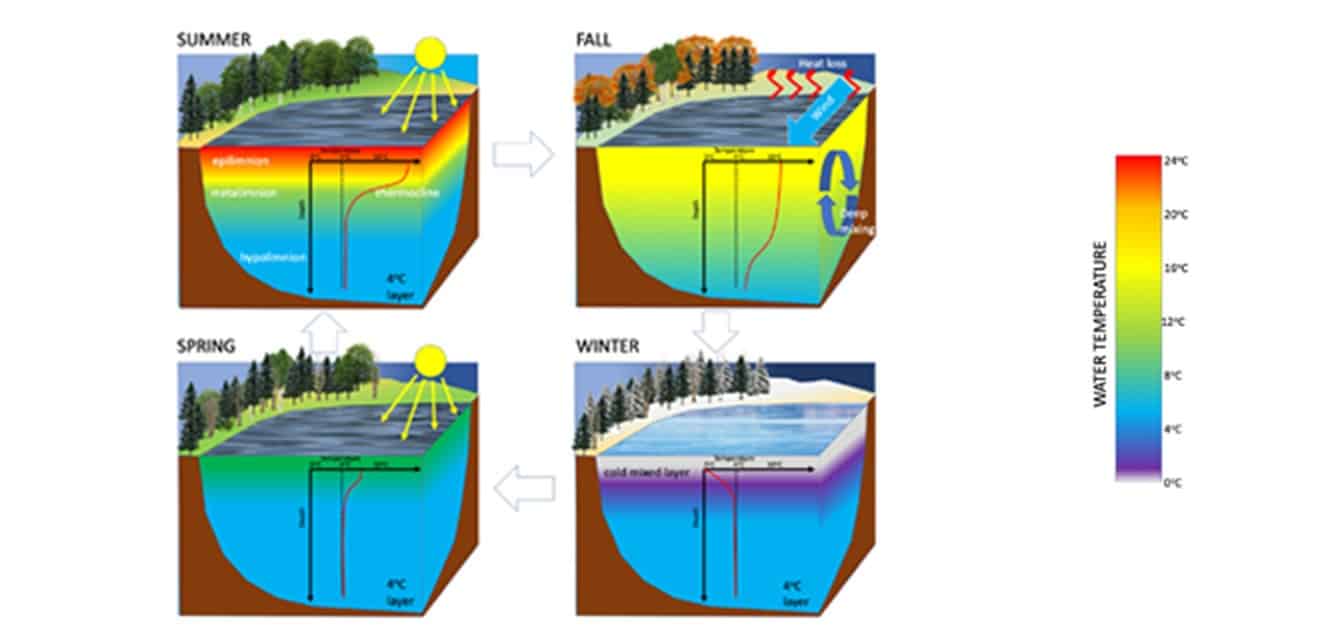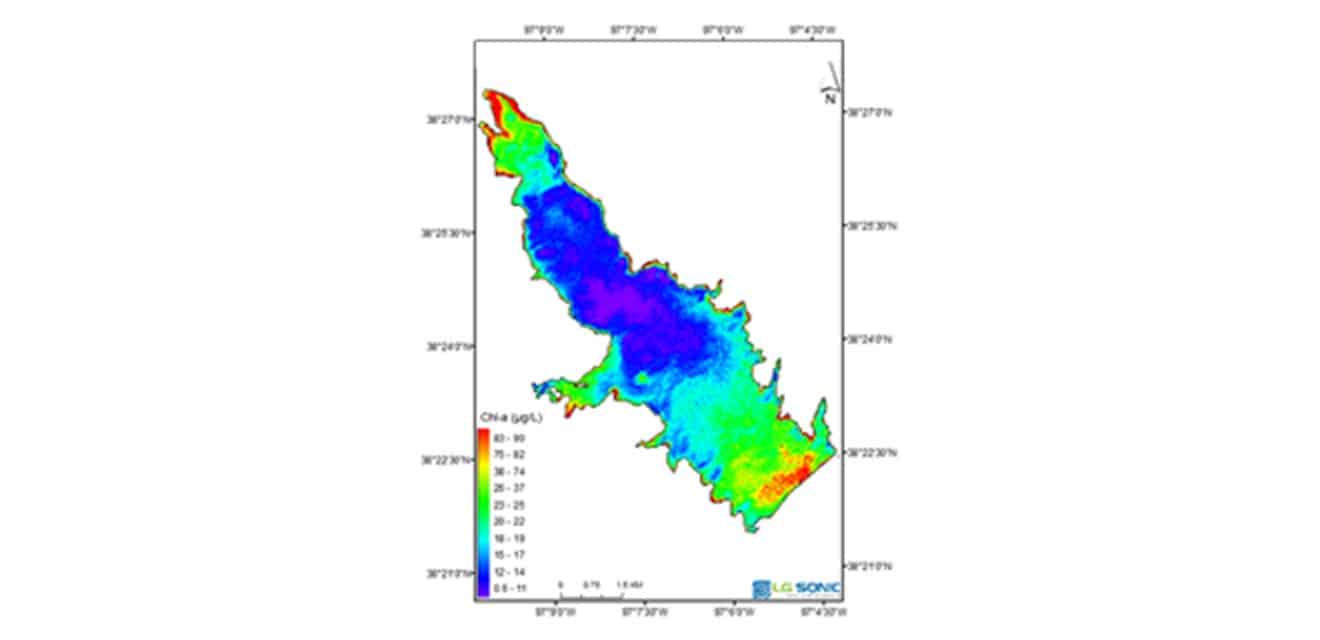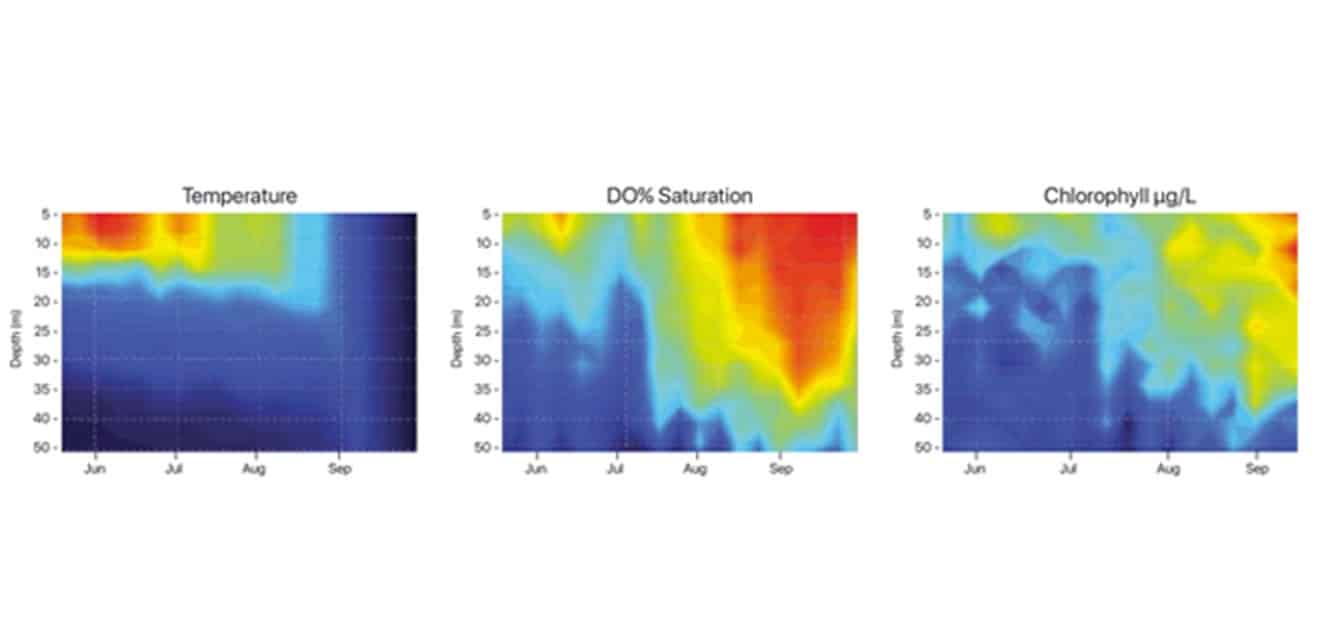In short
- Water characteristics change throughout a water column;
- External factors can alter the biochemical composition of the water body;
- Real-time data from in-situ and vertical profiling is critical for any facility.
Recently, we’ve developed a new technology, allowing the monitoring of nutrients in high resolution at different depths. Combined with our other monitoring tools, the LG Sonic Vertical Profiling Systems offers a unique way to detect the spatial and temporal patterns of nutrient concentrations, which play a critical role in algae-related problems. Combined with physico-chemical data, this information can assist in determining the most optimal solution.

The importance of aquatic plants
In healthy water bodies, plants grow at the bottom or the surface. Aquatic plants are important. They can act as nutrient sinks, improve water clarity, and provide habitat for other aquatic organisms. Benthic plants that grow at the bottom can significantly improve water quality. These plants consume nutrients released from the sediment and water layers, and increase the dissolved oxygen levels at the bottom of a lake or reservoir. The oxygen is used by the aerobic bacteria that break down organic material and control the nutrient accumulation in the sediments.
In a balanced aquatic ecosystem, plants and bacteria function synergistically to reduce the level of nutrients. Yet, in water bodies abundant with algae, benthic plants cannot grow. This cycle is disturbed, often leading to an excessive nutrient build-up in the sediment, culminating in eutrophication.
Eutrophication
Most lakes suffering from severe algal blooms are eutrophic or hyper-eutrophic. The trophic state of a lake is determined by the concentration of nutrients (mainly phosphate and total phosphorus), and is assessed by the concentration of algae (chlorophyll a) and water transparency. A hyper-eutrophic or eutrophic lake contains increased concentrations of nutrients, causing persistent algae blooms.
One way to tackle eutrophication is to prevent nutrient inflow. Nevertheless, the solution for harmful blooms is rarely this simple. Many water bodies have been overwhelmed with nutrients for years or even decades. This caused a phosphate build-up in the sediments, found in the bottom of lakes and reservoirs.
Stratification
Deeper lakes and reservoirs (usually over 6 meters deep) experience stratification, a process through which the water divides into different layers with varying temperatures and density.
The epilimnion is the warmer water near the surface of a lake; the hypolimnion is the cooler, more dense water layer at the bottom; and the metalimnion is the middle layer, where the thermocline is—the metalimnion shifts from warm to cold between the epilimnion and hypolimnion layers.

Phytoplankton and nutrients may accumulate near the interface of these thermal zones. The bottom of a mesotrophic or eutrophic lake usually remains anoxic (lacking oxygen) during stratification. This leads to an accelerated release of nutrients and other toxic substances (hydrogen sulphate, ammonia, etc.) from the sediments. When nutrient-rich sediment builds up for a prolonged time, it fuels algae blooms for years, even after reduced external nutrient inflow.
Monitoring nutrients
We have several solutions to control and prevent algae blooms and their harmful effects. To know which solution is best for a lake, we first monitor and assess its status.
The source of nutrients and how a lake responds to nutrient enrichment are always complex and unique for each situation. Before implementing any treatment, the chemistry of the lake must be assessed. We monitor the vertical, spatial, and temporal patterns of water quality variables.
The MPC-Buoy uses ultrasound that directly impacts algal growth. This technology is non-invasive, chemical-free, and only affects the algae; therefore, it can also improve light conditions for the growth of aquatic plants and good bacteria in the sediment.
The Monitoring Buoy can profile the vertical column of a lake. Both the MPC-Buoy and the Monitoring Buoy systems can autonomously measure different variables, such as nitrate (N-NO3), phosphate (P-PO4), ammonium (NH4), turbidity, chlorophyll-a, phycocyanin, dissolved oxygen, temperature, pH, and more.

These measurements can also be taken at different depths, helped by a vertical profiling system. They are calculated in real-time and are outputted several times a day.
As these systems also provide a temporal overview, the data can identify the source and dynamics of the nutrients within a water body. The buoys detect the nutrient release from the sediment and relate that information to nutrient input from other sources.
A lake or reservoir is rarely homogenous. Its characteristics vary from one meter to another, or even from one day to another. The vertical stratification, variations in water quality, nutrient concentrations, and algae growth also differ horizontally. This is where satellite images can offer great insights.
Remote sensing means using satellite data, such as images from Landsat or Sentinel, to determine water quality parameters that normally can be measured only in the laboratory or through in-situ sensors. However, remote sensing has an unparalleled advantage; it is the only data source that provides an overview of water quality parameters across an entire water surface. Large or inaccessible areas suddenly become accessible.
Combined with the more specific real-time data, remote sensing can interpolate information from the buoys to other areas of a lake. Lake dynamics can be assessed by determining variables such as chlorophyll a, turbidity, phycocyanin, and algal blooms. An additional bathymetric study may determine where the highest level of sediment build-up is in a lake.
These data sources are processed in MPC-View, a web-based software, and they shed light on the relationship between nutrient inflow and sediment release. We can also determine the time of the year at which the sediment releases critical nutrient loads.
Last, by monitoring nutrients in relation to other physico-chemical variables, we can determine the magnitude of nutrient availability along the water column, and the role of sediments in nutrient cycling.

